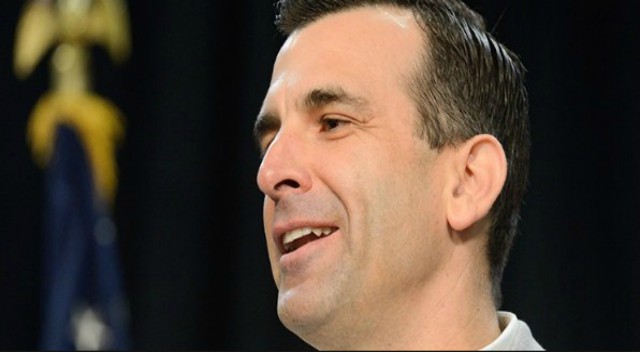
Liccardo unveils plan aimed at easing San Jose’s housing crunch
San Jose Mayor Sam Liccardo has unveiled a 15-point housing plan that focuses on middle-income workers to address what he’s described as an intensifying housing crisis.
He is holding an 11:30 a.m. press conference Monday at the Japantown Senior Apartments to go into further detail, but here is the plan in outline form:
- Financing Housing for our Missing Middle: Craft a private-public financing mechanism for rent-restricted housing for modest and middle income workers such as teachers, nurses and police officers struggling with high living costs.
- Expand Housing for Students, Faculty & Staff at San Jose State University: Focus on our future by making college more affordable, and teaching a more financially viable career, with SJSU’s help.
- Partner on Teacher Housing Projects: Encourage school districts to make district-owned land available for construction of affordable housing for teachers and staff.
- Better Utilize Caltrans Land for Homeless Housing: Work with Caltrans on sites they have identified to develop additional housing for the homeless, and identify other underutilized publicly owned land.
- Revitalize Struggling Business Districts: Encourage mixed-use developments that integrate housing that can create needed foot traffic in several declining neighborhood business districts.
- Double Down on Downtown: Eliminating constraints in development guidelines can facilitate more housing in towers adjacent to new transit, adding vitality to our core without the burden of freeway traffic.
- Transit-oriented Affordable Housing in North San Jose:Eliminating longstanding legal hurdles can enable construction of 2,400 affordable homes adjacent to light rail and BARTstations in North San Jose.
- Encourage Secondary Units: With loosened regulations to encourage homeowners to build secondary units on their lots, the Housing Trust’s new pilot program can enable broader awareness of this opportunity.
- Protect Residents from Displacement: Focusing on expanding housing where it doesn’t currently exist with affordability requirements can ensure that new housing doesn’t push out vulnerable current tenants.
- Move Urban Villages with Existing Transit to the Front of the Line: Accelerating housing in those urban villages that already have light rail and bus rapid transit stops can enable housing development without the same road congestion.
- Better Identify Housing Sites to Prospective Developers: Scrap the redundant layers of zoning and land use designations, and create new on-line tools to help small developers identify the hard-to-find existing in-fill housing opportunity sites.
- Ree v a luate Fees to Encourage Construction: Calculate and collect development fees in ways that encourage new housing construction while ensure developers pay their fair share for parks, roads, and other needs.
- Incentivize Neighboring Cities to Do Their Share: Incentivize our surrounding jobs-heavy suburban cities to bear their responsibility for building housing through changes in regional transportation funding and fee formulas.
- Generate More Funding for Affordable Housing: Explore options to increase funding for affordability, such as an “empty home fee,” higher affordability requirements for general plan changes, and tax-increment financing.
- Redevelop Nuisance Properties: Eliminate zoning barriers to enable transformation of bars, liquor stores, massage parlors, bail bonds, and other complaint-inducing uses to community-serving, mixed-use housing.
The entire text of the plan is available on the city’s website. Estimates of the cost of implementing the plan and which government entities would bear them were not immediately available. However, use of terms such as “expand,” “encourage” and “incentivize” — among others — provide hints that there will be costs such as subsidies or lowering of fees, either of which would have budget impacts to the city.
“There’s no question we’re in a housing crisis, and the crisis is at all levels of income,” Liccardo said in a Sept. 22 interview with the Business Journal. “When we look at historically San Jose’s role in Silicon Valley, we’ve been the bedroom community for the Valley for decades. We recognize our responsibility as the big city to continue to be the place where a lot of housing gets built.”
San Jose home values have climbed 8.5 percent over the last year, according to real estate listing site Zillow, to a median of $902,000. To afford those homes, the city has the highest typical down payment in the U.S., at an average of $344,570 (median $242,000).
The median rent in the city is $3,300.
In the SVBJ interview, Liccardo hinted that he’d be focused in large part on making more housing available for middle-income workers like teachers and nurses.
“The question is, is there room for a partnership between the private sector and the public sector where we could create rent-restricted housing for the missing middle?” the mayor said. “By that I’m referring to teachers, nurses, others who are something less than 100 percent at AMI (area median income). But clearly there’s a huge need for it, create rent-restricted housing utilizing overwhelmingly private dollars but with a public back-stock.”
Liccardo said earlier that his housing plan would be “a pretty comprehensive set of proposals” aimed at expanding “housing production at all income levels.”
Stay with the Business Journal for full details of the mayor’s housing proposal.
